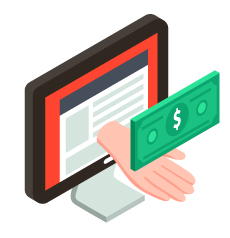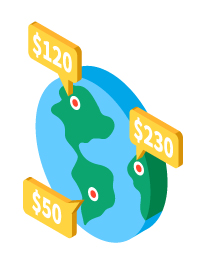Crowdfunding is impacting the arts world, and artists and organizations are capitalizing on this resource that offers wide-ranging opportunity.
“Our mission, at its simplest, is to bring creative projects to life,” said Jessica Massart, senior performance lead for dance and theater at Kickstarter, the world’s largest crowdfunding platform for creatives. It has a proven record. In its art, dance, photography and theater categories, Kickstarter Arts boasts more than $70 million raised for 10,000 artistic projects
“Across the platform, our rate of success [in Arts] is higher than others on Kickstarter, which is around 33 percent,” Massart said. Dance and theater campaigns have the highest rate with 60 percent funded, followed by 59 percent in comics and 50 percent in music.
The Kickstarter model lets creators pitch ideas directly to potential supporters, free from the confines of traditional gatekeepers. It reflects a contemporary trend in the future of arts funding, said Broward Cultural Division Grants Administrator James Shermer.
“It allows investors to be on the ground level, which is appealing to the new generation of donors,” Shermer said.
The Cultural Division recently presented several workshops with Massart and her colleague Daniel Sharp, whose focus is photography, public art, and political art. Some key takeaways:

Begin with the end in mind
Factors that boost a Kickstarter campaign include an engaging story and video, setting a realistic monetary goal and connecting with your audience. Rewards that resonate with backers at various levels are an asset, too.
Massart recommends a six-week planning window. Kickstarter’s online tools can help build a project page from draft to launch and the site will save your progress as you edit your page so you can be sure every step supports your end goal.

Tell a compelling story with a call to action
Your story should draw backers into your world. Be sincere. Address the hard questions such as where will the funds go and what are the risks. But keep it “short and sweet,” Sharp said.
Position your call to action near the top so it’s clear. Use bullet points, images and headers to break the text into easy-to-read chunks. Avoid formal grant-writing lingo. This is a chance to communicate on a personal level. Anything that hits the “nitty gritty” and gets people excited, Massart said.

Shoot a great video
It doesn’t have to be fancy. Even a high quality phone camera can produce a good film if lighting and sound ring clear. Keep it short—no more than two minutes—and show your “ask” in the first 20 seconds, Sharp said. Tie the clip to your story by repeating text and headers.
What can I expect?
Kickstarter fees claim about 8 percent of the total of fully funded campaigns. Its all-or-nothing structure reduces risk for both backers and creators by awarding only fully funded projects. Donors’ credit card pledges are not charged until a campaign attains its goal.
Reaching the right audience at the right price point is essential. Most successful campaigns aim to raise no more than $10,000. For instance, 75 percent of fully funded projects are fueled by only 25 backers.
“If your project tells a compelling story it should exist in the world,” Sharp said. “And if someone will want to give you money, $5, $10, or $100, they think that story should exist.” Social media can help spread the word.

Offer enticing rewards
Donor rewards should reflect the project without adding a costly task or complication to the fund drive. Mementos are a good choice, but beware of production costs. And “everyone already has 30 tote bags and T-shirts,” Sharp said.
Think about an experiential event such as a potluck dinner in the studio or an acknowledgment in an exhibition. Sharp recommends five to seven reward tiers targeted to donations of $25 to $100.

Acampaign travels far
Beyond financial goals, consider the promotional angle and Kickstarter’s ability to increase awareness or test demand for your work. A campaign can build buzz for ticket sales or an installation. Kickstarter’s one-to-one backer messaging lets you reach new fans.
Additionally, Kickstarter can take a campaign to a wider global community or ethnic group. Projects can’t support a cause such as hurricane relief but they can fund concepts, activities and products beyond what grants can accomplish.

“You’re not geographically tied to the fundraising,” Shermer said. “Artists who live on the East Coast can crowdfund projects in Chicago or Los Angeles.”
Get help from the pros
Watch videos and learn from winning campaigns on Kickstarter.art/projects. Creators who seek guidance from the experts at Kickstarter can often lift their success rate to 90 percent, Massart said. She invites users to submit questions through the website’s contact page on kickstarter.art.